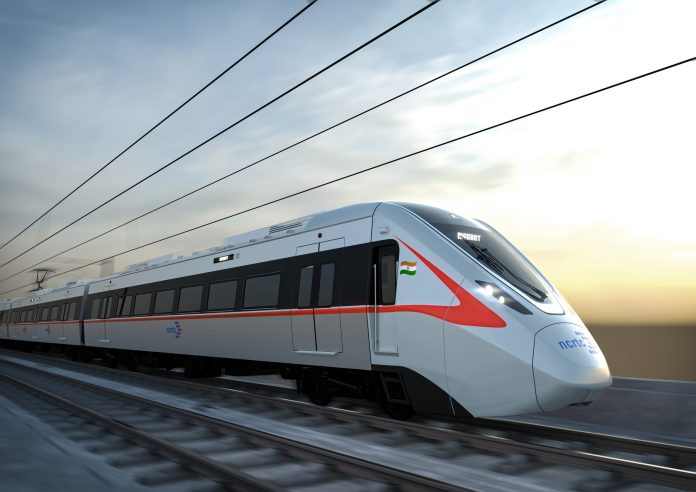Snapshot
More than 20 anti-smog guns are currently deployed to deal with the ever-growing smog during this winter season. Persistent sprinkling of water, almost 24×7, is being done at the construction sites.
In view of the prevailing poor air quality around the national capital, National Capital Region Transport Corporation (NCRTC) has augmented measures to mitigate pollution on its under-construction regional rapid transit system (RRTS) corridor.
NCRTC — a joint venture company of the government of India and Delhi, Haryana, Rajasthan and Uttar Pradesh, under the administrative control of Ministry of Housing and Urban Affairs, is mandated for implementing the RRTS project across the National Capital Region (NCR).
The Delhi-Ghaziabad-Meerut corridor is the project of national importance, being part of the National Infrastructure Pipeline (NIP). Strict compliance of prescribed norms is being followed and various dust control measures are being adopted.
The Delhi-Ghaziabad-Meerut RRTS is a high-speed commuter service being developed to connect the regional nodes in the NCR.
NCRTC is working on Sarai Kale Khan, New Ashok Nagar and Anand Vihar RRTS stations in Delhi including RRTS viaduct and tunnels for elevated as well as underground sections of the corridor.
The work is also going on in full swing at various locations of Ghaziabad and Meerut in Uttar Pradesh.
NCRTC has managed the pace of the construction while simultaneously taking extensive pollution control measures in and around the construction sites. A dedicated team of experts are regularly monitoring the effectiveness of these measures and step-up the activities wherever necessary.
Construction work is being done within barricaded zones of adequate height and thorough cleanliness is being maintained on these sites. Anti-smog guns and water sprinklers are deployed to settle the construction dust.
All the raw materials, debris are kept covered at their marked sites. The diesel and petrol vehicles older than 10 and 15 years respectively are prohibited and only PUC certified vehicles are being used.
Waste of construction and demolition is collected and disposed of as per prescribed rules. Water pumps have also been established in each casting yard, especially for washing tyres of mud-laden heavy truck trailers used to carry huge segments, cement, sand etc. This helps in preventing spread of any kind of dirt in adjoining areas of the corridor.
Many such similar pollution mitigation measures are being undertaken regularly and a team of dedicated quality, environment and safety experts continuously review and upgrade these steps from time to time. For this purpose, air quality monitors have also been installed at many places to keep track of the air quality and instruct necessary measures accordingly.
More than 20 anti-smog guns are currently deployed to deal with the ever-growing smog during this winter season. Persistent sprinkling of water, almost 24×7, is being done at the construction sites. Arrangements have also been made to remove the soil accumulated on the sites and the roadside by using the Brummer machine.
Moreover, NCRTC is extensively using pre-cast technology in RRTS construction, wherein segments of huge structures (stations/viaduct/tunnels) are casted in the RRTS casting yards in a controlled environment. This strategic decision of limiting construction activities at the sites also leads to systematic handling and processing of raw materials, such as cement, sand, etc.
It may be noted that the implementation of all three RRTS corridors of the first phase is an integral part of a larger strategy to address issues of congestion and pollution. It is also a part of the comprehensive action plan (CAP) for air pollution control in Delhi and NCR, recommended by a high-powered committee on decongesting traffic in Delhi.
Being a rail-based transit system, it will have 1/5th fossil fuel consumption as compared with road-based vehicles. With all efforts to ensure zero emission of GHGs, RRTS will strive to earn carbon credits.
The implementation of Delhi-Meerut RRTS corridor is estimated to increase the share of public transportation usage along the corridor from 37 per cent to 63 per cent.
Once operational, an estimated daily ridership on the 82 km long Delhi-Ghaziabad-Meerut Corridor will be 8 lakh. As per an estimate, RRTS will lead to substantial reduction of pollution post its implementation.
The same estimation states that implementation of RRTS will reduce emission of hazardous PM 2.5 particles by 60,000 tonne, and carbon monoxide by 800,000 tonne, annually.


